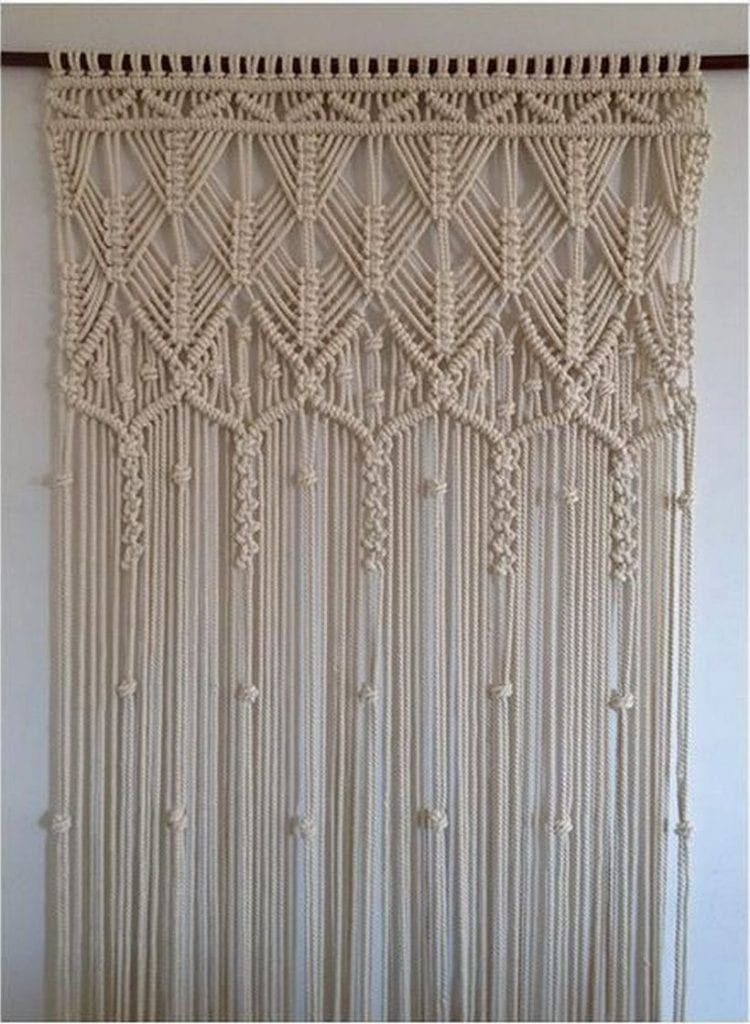Macrame curtains are not just window treatments—they’re a beautiful fusion of art and functionality. Whether you’re aiming for a cozy boho vibe or a minimalist look with texture and depth, macrame brings charm and character to any space. These handcrafted pieces of decor have made a massive comeback in recent years, and it’s easy to see why.
When you choose macrame curtains, you’re not only adding privacy or softening sunlight; you’re telling a story of tradition, creativity, and style. Made from knotted cords, often cotton or jute, these curtains offer a handmade touch that machine-made options simply can’t replicate. More than decor, they are conversation starters, crafted with love and intention.
The versatility of macrame curtains allows them to fit seamlessly into various home styles—from rustic to Scandinavian, and from eclectic to beach house chic. If you’re curious about how to use them effectively, what types exist, or how to care for them, this article will guide you through everything you need to know.

The Allure of Macrame Curtains in Modern Interiors
In today’s design trends, texture and artisanal craftsmanship are more valued than ever. Macrame curtains add depth and a tactile quality to rooms that might otherwise feel flat or overly modern. Whether hung in front of a window, used as a room divider, or styled as a backdrop for a bed or an event, macrame offers softness and soul.
These curtains can be simple with uniform knots, or they can feature complex patterns that showcase the maker’s skill and artistry. The beauty of macrame curtains is that each piece is slightly different, making your home unique. There’s an authenticity in imperfection—a philosophy central to macrame and handmade decor in general.
Many homeowners are turning to macrame curtains as a way to embrace sustainable living. Since they are often made from natural fibers and crafted by hand, they reduce the need for industrially produced goods. For eco-conscious decorators, this is a win-win: style with a purpose.
Choosing the Right Type of Macrame Curtains
There’s no one-size-fits-all approach when selecting macrame curtains. The variety is vast, and choosing the right type depends on your needs and the space where they’ll hang.
First, consider the purpose. Are you looking for privacy, light filtration, or purely decorative value? Macrame curtains with dense knotting offer more coverage, while those with open patterns let in more natural light and create an airy feeling.
Next, pay attention to the size. Some macrame curtains are designed to fit standard windows, while others work better as statement pieces over sliding doors or as room dividers. Always measure your space before purchasing or commissioning a piece.
Color also plays a role. While most macrame curtains are in neutral tones like cream, white, or beige, you can find or custom order dyed options that fit your palette. Natural tones are ideal for a calming space, while darker hues create contrast and draw the eye.
Hardware matters, too. Will you hang them with curtain rods, hooks, or wooden dowels? Some macrame curtains come with loops integrated into the design, making them easier to install.
Lastly, consider the thickness of the cord. Thicker cords give a bold, dramatic look, whereas thinner ones allow for more delicate patterns. Your choice will affect the curtain’s overall feel and how it interacts with your room’s lighting and furnishings.
How to Care for Macrame Curtains and Make Them Last
Taking care of macrame curtains ensures they stay beautiful and intact for years. Though they look delicate, macrame is surprisingly durable if handled correctly.
Begin by regularly dusting them with a feather duster or handheld vacuum using a gentle brush attachment. Dust tends to accumulate in the knots, so cleaning them once a week will keep them looking fresh.
If your macrame curtains get stained or heavily soiled, hand washing is best. Use cold water and mild soap, gently agitating the fibers without wringing or scrubbing too hard. Harsh chemicals and rough handling can distort the shape and pattern.
Drying should be natural—hang them in a well-ventilated space away from direct sunlight. The sun can cause some fibers, especially dyed ones, to fade over time. Always reshape them while damp to maintain their original form.
Avoid exposing them to constant moisture or steam, such as in bathrooms with poor ventilation. Although macrame curtains are versatile, excessive humidity can lead to mold or deterioration.
Storage is simple. If you’re rotating your decor seasonally, fold the curtains gently and store them in a dry, breathable bag or container. Avoid compressing them too tightly, which can lead to creases in the knotwork.
With just a little attention and care, your macrame curtains will continue to enhance your space with beauty and texture for many years.
DIY or Buy: Exploring Your Options
One of the most appealing aspects of macrame curtains is that you can either purchase them or create your own. Each path has its own joys and challenges.
Buying pre-made macrame curtains is ideal for those who want instant decor without the time commitment. Many artisans and small businesses sell beautiful, ready-to-hang pieces that range in size, color, and complexity.
On the other hand, crafting your own macrame curtain can be a fulfilling experience. With some patience, tutorials, and the right materials, even beginners can create impressive results. You’ll need cotton cord, a rod or dowel, and knowledge of basic knots like the square knot, lark’s head, and double half hitch.
DIY macrame offers personalization—you can control the pattern, size, and even add beads or fringes. It’s also therapeutic. Many find the rhythmic knotting to be a calming hobby that connects them to a slower, more intentional way of living.
Of course, making macrame curtains from scratch takes time. It’s not for everyone, especially if you’re decorating multiple rooms or working on a tight schedule. But the handmade charm and satisfaction of completing your own curtain can make it well worth the effort.
Whether you buy or DIY, the end result is a beautiful addition to your home that reflects personal taste and care.
Frequently Asked Questions About Macrame Curtains
Are macrame curtains good for privacy?
Yes, but it depends on the knot density. Tightly knotted macrame curtains provide more coverage, while looser designs are more decorative.
Can I use macrame curtains outdoors?
You can, but they must be made from weather-resistant materials. Regular macrame cords can deteriorate in rain or sun unless protected.
Do macrame curtains shrink when washed?
If washed improperly, yes. Always use cold water and air dry to avoid shrinkage or deformation of the knots.
How long does it take to make a macrame curtain?
It depends on the size and pattern complexity. A basic curtain can take several hours, while intricate designs might take days or even weeks.
Where can I hang macrame curtains besides windows?
They’re perfect for doorways, closet covers, headboards, room dividers, and even event backdrops for weddings or photoshoots.
Are macrame curtains machine washable?
Not recommended. Hand washing is gentler and safer for maintaining the curtain’s structure and beauty.
Can I customize the pattern or size?
Absolutely. Many artisans take custom orders, or you can create your own design if making it yourself.
What type of cord is best for macrame curtains?
Cotton cord is the most popular, but jute, hemp, or synthetic blends can also work depending on your style and durability needs.
Are macrame curtains child- or pet-friendly?
If hung securely and kept out of reach, yes. Just be cautious of dangling cords, which might attract playful paws or curious toddlers.
How can I add color to my macrame curtains?
Use naturally dyed cords or gently dye finished pieces using fabric-safe colorants. Always test a small section first to ensure even results.
Macrame curtains are more than just window coverings—they’re artistic statements that bring life, warmth, and texture to any room. Whether you’re a DIY enthusiast or prefer to support handmade artisans, these curtains offer a stylish and meaningful addition to your living space.
In this article, we explored how to choose the right macrame curtain, how to care for it, where and how it can be used, and whether to buy or make your own. We hope this guide has helped you understand the charm and versatility of macrame in home decor.
If you’ve ever tried macrame curtains or have questions, we’d love to hear your thoughts. Feel free to leave your honest opinion and suggestions below—your feedback helps us grow and continue sharing content you love!
